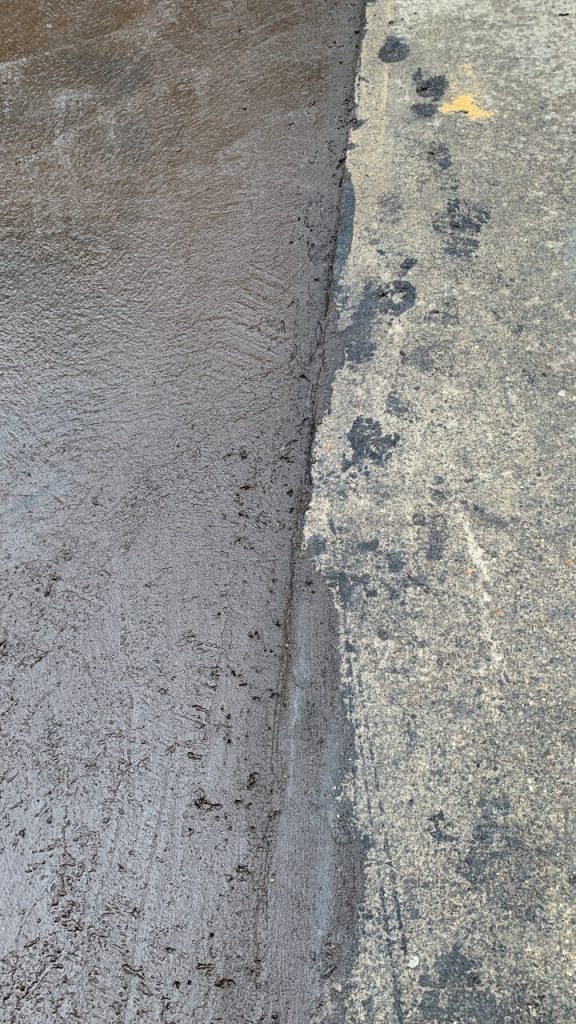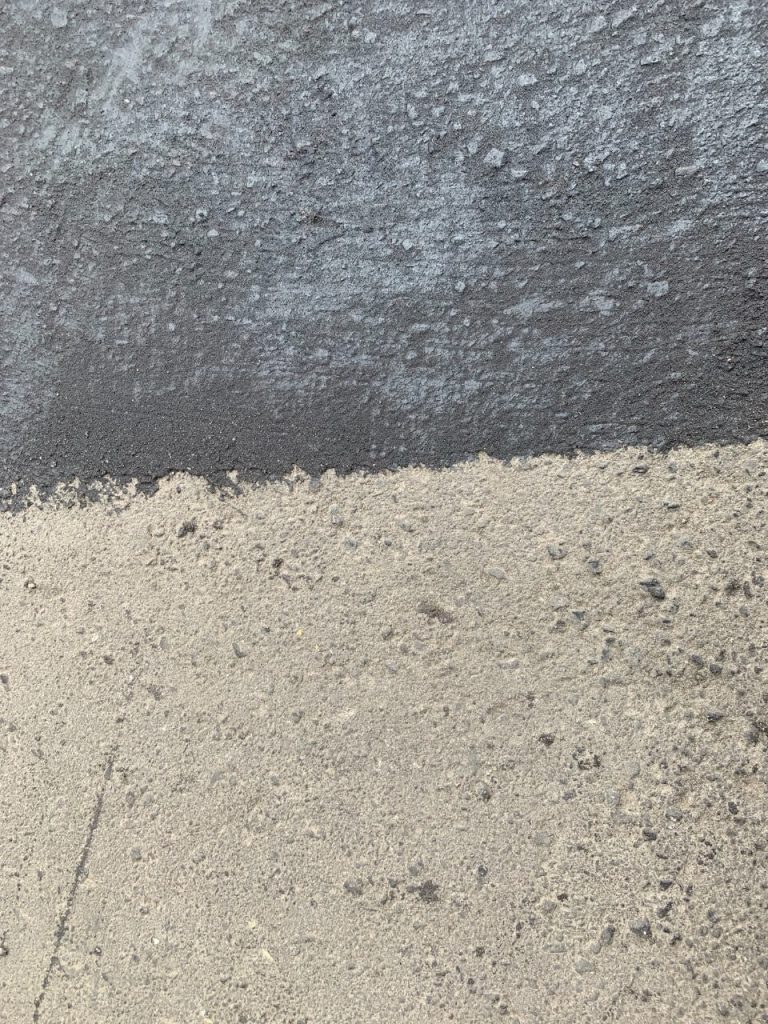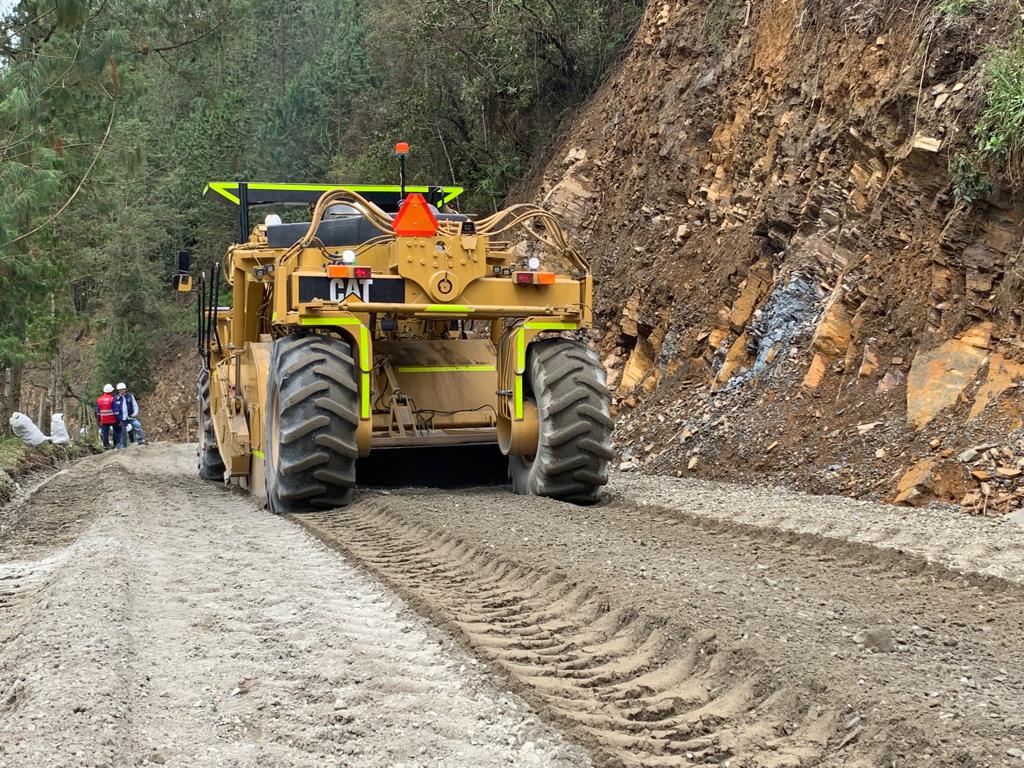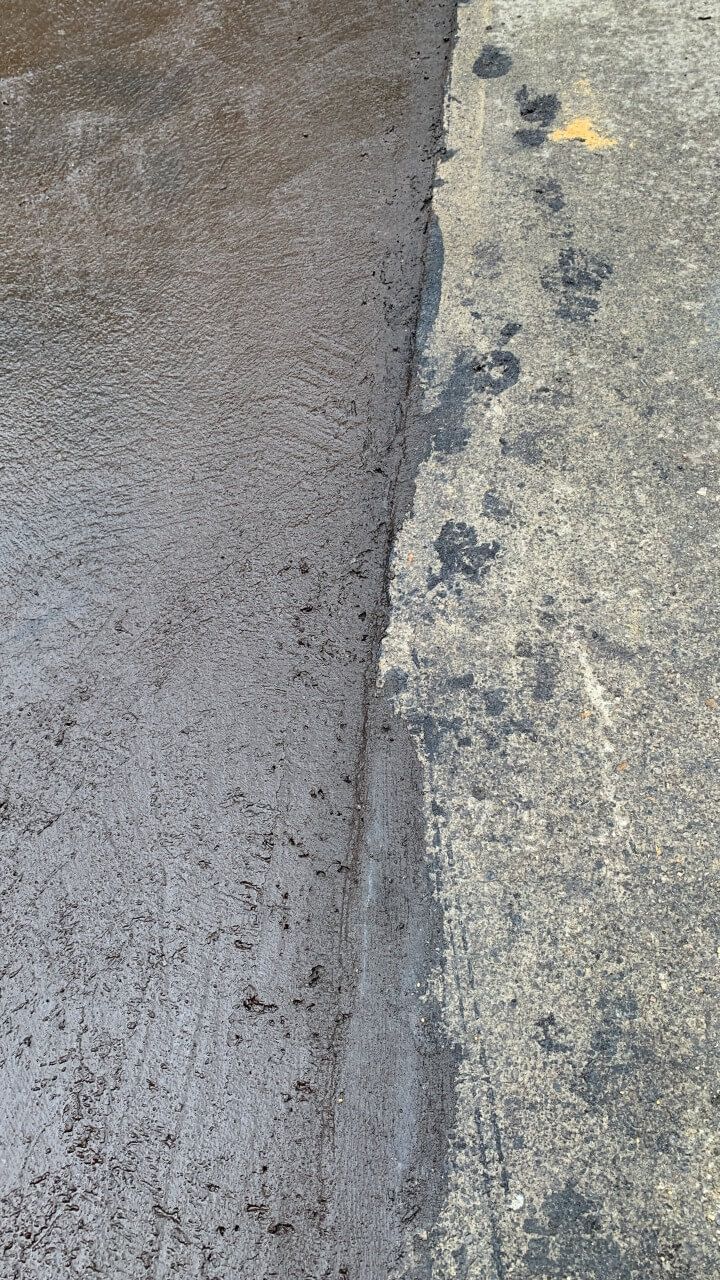What is a Slurry Seal?
Slurry Seal is an asphalt-based paste mix that is applied to surfaces to solve a wide range of challenges in various types of road pavements and infrastructure. A slurry is a black paste-like mixture composed primarily of aggregate, sand, asphalt emulsion, water and a mineral filler.
Slurry Seal in some cases is considered as a rejuvenating agent for existing pavement as it behaves as an oxidation inhibitor as well as a wearing layer that extends the life of pavement roads.
What Materials do you need to prepare a Slurry Seal?
A slurry seal treatment consists of a mix of asphalt emulsion with aggregates and mineral filler such as cement or rock dust. The principal materials can be mixed in different proportions depending on the type of slurry seal and road surface conditions. A quick formula for the slurry seal dosage can be fin ahead (based on the weight of dry aggregate):
| Material | % over weight of Aggregate/Sand |
| Polymer Modified Cationic Bitumen Emulsion (Emulsified asphalt) with Controlled Setting: | 7,5-15,0% |
| Water | 7,0-10,0% |
| Mineral Filler | 1.0% |

How do your prepare a Slurry Seal?
You must measure all the materials prior to the mix, and you can mix such manually in a recipient for small batches with a mixer or use an automated or semi-automated slurry truck to mix the materials according to the slurry design and dosage.
Applications of a Slurry Seal
A slurry seal can be applied on many types of surfaces, it has a wide range of applications. It can be used on a wide range of traffic volumes, going from residential streets to highways. it is important to evaluate, previous to the slurry application, if there are any severe surface defects and their causes; in case there are severe pathologies present, a slurry may not be the best option for your pavement surface.
Can you put slurry seal over concrete?
You can lay slurry on concrete as an additional wear surface or in order to achieve a black pavement surface color and even to apply minor repairs to pavement surfaces in concrete, but the slurry mixture must not be applied to repair significant surface or structural damages; cracks and other pathologies will run past the slurry mixture up to the surface and may create maintenance concerns or even the destruction of the recently applied surface.
How do you apply a Slurry Seal?
You can apply a slurry with a spreader box or manually, depending on the geometry and miles of Roadway that must be intervened. These two factors determine the best way to apply the slurry, where one seeks to saturate the asphalt surfaces completely with the slurry and simultaneously, spread it evenly amongst the entire roadway surface. One must evaluate the pavement surface conditions prior to the application of slurry, checking for surface cracks and their characteristics, water damage, among other indicators of pavement life and condition that can determine if it is feasible to apply such treatment or if additional interventions are required.
Once the pavement condition is verified and other pavement restoration activities are executed, such as crack sealing, the slurry seal application can commence, basically cleaning the surface from dust and other pollutants and laying one or several homogeneous layers of slurry. It is necessary to wait for the new asphalt pavement surface to cure once the emulsion breaks, before applying a new layer or opening to traffic. Depending on the volume of traffic, the roads can be opened a couple of hours after the application with traffic controls that allow for a maximum speed limit of 30 km/h (18 mi/h).
Slurry Seal as a Pavement Surface Treatment
Slurry seal is an ideal and economical alternative for pavement surface treatment on all sorts of pavement applications; be it preventive maintenance, protective layer, improving skid resistance, improving appearance after surface patching, improving minor surface defects or minor surface irregularities or simply to make a roadway entrance or parking lots look better.
This type of treatment not only preserves and extends the life of asphalt surfaces but also improves the ride quality and can make the road safer under adverse weather conditions.
Is slurry seal any good?
In conclusion, a slurry seal is an efficient surface treatment as long as the right kind of materials are used, along with the right design and application. One must keep in mind that it is not a miraculous solution for all pavements; hence it can repair moderate pavement surface defects but not deep pavement pathologies.
How long does slurry seal last?
Slurry seal is a long-lasting pavement surface treatment that can last up to ten years depending on the type of material used, the conditions of the pavement and traffic. The longevity of slurry seal depends on factors such as traffic volume, climate, and maintenance. In areas with high traffic volumes, slurry seal may need to be reapplied every 2-5 years in order to maintain its effectiveness.

How thick is slurry seal?
The thickness of slurry seal depends on the type of material used, the condition of the pavement, and the desired outcome. Generally speaking, a slurry seal should be applied at a minimum thickness of 1/4 inch (6 mm). For more severe pavement defects or for areas with high traffic volumes, thicker layers may be necessary. The maximum recommended thickness is usually 1/2 inch (12 mm).
What is the most common uses of a slurry seal?
The most common uses of a slurry seal are for pavement preservation, protection, and improvement. Slurry seal is used to protect asphalt pavements from the elements, such as water damage, oxidation, and UV radiation. It also helps to improve skid resistance and reduce noise levels on the roadway. Slurry seal can also be used to fill minor surface defects or irregularities, making the pavement look better and last longer.
How much does slurry seal cost?
The cost of slurry seal depends on several factors, such as the type of material used, the condition of the pavement, and the desired outcome. Generally speaking, a slurry seal can range from $0.50 to $2.00 per square foot (5-10 $ per square meter – m2). The cost may also be affected by labor costs and other associated expenses. It is important to note that slurry seal is an economical
Does slurry seal fix cracks?
Slurry fixes minor surface cracks but it is not recommended on heavily affected pavements. For more severe cracks, a crack sealant should be used. Crack sealants are designed to fill and seal the cracks in the pavement, preventing water from entering and further damaging the pavement.
What is the difference between slurry seal and seal coat
The main difference between slurry seal and seal coat is the type of material used. Slurry seal is a mixture of asphalt emulsion, water, aggregate, and additives that are applied to the surface of a pavement in order to protect it from damage caused by water, oxidation, and UV radiation. Seal coat is a thin layer of asphalt emulsion that is applied directly to the surface of a pavement in order to protect it from damage caused by water, oxidation, and UV radiation.

Contact us to get to work
We have a talented team, the best materials, tools, and equipment at your disposal.
